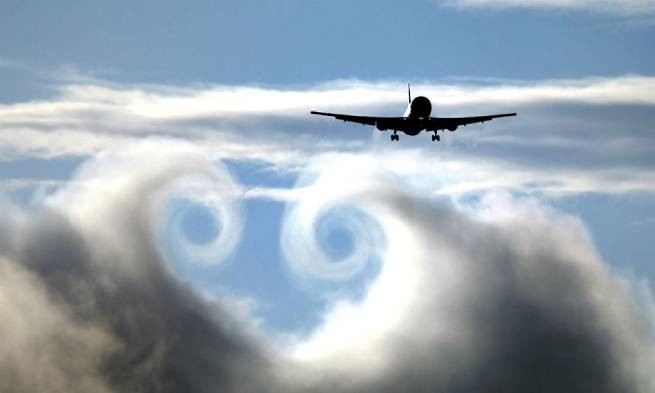On which routes is encountering turbulence most likely, and where does it even come from?
Recently, our publication talked about how a Singapore Airlines plane encountered severe turbulence, flying over Asia. For this reason, a 73-year-old British citizen died, who, as it turned out, was not wearing a seat belt.
Turbulence is a fairly common part of flying, but it can also be extremely dangerous. The Guardian edition tells about the reasons for its occurrence and why some areas “suffer” more than others.
“Disturbed” air movement, which can cause various types of vibrations in the aircraft, is called turbulence. This is the main cause of possible injury to both passengers and crew members during air travel. It is also caused by weather conditions and even the landscape of the area over which the aircraft flies. Based on the intensity of the tremors, there are six degrees of severity of this phenomenon.
According to the head of Griffith Aviation at Griffith University, Dr. Guido Karim Jr., as a rule, turbulence is possible when flying over mountains and oceans, when crossing the equator, when entering jet streams. But in reality it can occur anywhere. He explains:
“Radar technology for detecting turbulence is improving, but despite all the instruments on board, we cannot accurately predict where and when it will occur.”
Therefore, he says, when approaching the mountains, be sure to include a sign asking you to fasten your seat belt – this can protect you from injury, and continues:
“The Bay of Bengal is known for its turbulence during the monsoon season, as are flights over the Alps, but sometimes you don't even notice. High humidity and temperatures tend to increase turbulence, so flying from London to New York in summer is likely to be more bumpy than flying the same route in December.”
Look what powerful turbulence overtook passengers on the QATAR AIRWAYS BOING 777-300 PHUKET – DOHA flight:
And this is six months ago, on November 25, on a plane flying from Petropavlovsk-Kamchatsky to Moscow:
But where do the world's most turbulent routes lie? Sweden has a website that “forecasts” turbulence – it uses data from the US National Oceanic and Atmospheric Administration and the UK Met Office. Last 2023, the most “turbulent” routes were:
- Santiago (Chile) – Santa Cruz (Bolivia);
- Almaty (Kazakhstan) – Bishkek (Kyrgyzstan);
- Lanzhou – Chengdu (China);
- Centrair – Sendai (Japan);
- Milan (Italy) – Geneva (Switzerland);
- Milan – Zurich, (Switzerland).
And the most restless countries for flights in April, according to the website, were French Polynesia, Pakistan, Fiji, Namibia and Uruguay. The South Pacific turned out to be more troubled.
According to the Australian Transport Safety Bureau, there were more than 3,000 turbulence incidents worldwide last year, about 250 of which were caused by weather conditions.







More Stories
When Greeks die most often: "fatal week"
Greece's Summer Coronavirus Outbreak: FLIRT Mutation Aggression
Study: 16(!) Toxic Metals Found in Women's Tampons